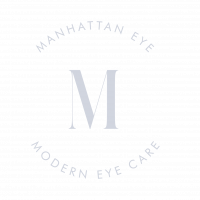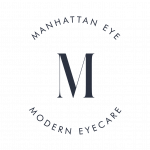PRK EYE SURGERY
In New York City
PRK is also known as LASEK (pronounced LAS-ECK), epi-LASIK.
PRK SURGERY NYC
"I did qualify for PRK. Dr. Rapoport was fantastic. I could not recommend a better eye surgeon. "
MJ / New York

PRK FAQS
Why PRK Surgery (Photorefractive Keratectomy)?
PRK, or photorefractive keratectomy, is a procedure that reshapes the front of the eye, or cornea, to enable you to see without contacts or glasses. Unlike LASIK, there is no flap created, and PRK can treat higher prescriptions and correct the vision of patients who are not candidates for LASIK.
What Is It?
When light rays travel through your eye- they go through the clear cornea, lens and focus onto the retina and are then transmitted into neuro-electrical signals which are then sent to the brain. If you are nearsighted or “myopic,” your cornea is too steep and/or your eyeball is too long, and the light rays focus in front of the retina. If you are farsighted, or “hyperopic,” your cornea is too flat and/or your eyeball is too short and the light rays focus behind the retina. The goal of PRK is to resurface the front of the cornea to make it flatter in the case of myopia, and steeper in the case of hyperopia, to enable the light rays to focus perfectly onto the retina and for you to see without glasses or contacts correction.
PRK is similar to LASIK in that it changes the shape of the cornea so that the light rays are able to focus directly onto the retina. The main difference is that in PRK, there is no corneal flap that is created. Instead, the top layer of cells, the epithelium, is gently removed. The excimer laser, which is preprogrammed with the specific measurements of your eye, then changes the shape of the cornea. To prevent post-operative haze (cloudiness), a drop called mitomycin C is placed onto the cornea for a short time. A bandage contact lens, which is a soft contact lens that is safe to leave on the eye while sleeping, is then placed, and it helps with the healing of the epithelium, or the top layer of the cornea. This bandage lens is removed in the office 3-7 days after the procedure. The final visual outcome of PRK and LASIK are the same, but PRK has a longer recovery course. The main advantage of PRK over LASIK is that since there is no corneal flap, the cornea has stronger inherent strength.
Link to AAO PRK : https://youtu.be/EoWdquQfAbA
What's the History of PRK?
First introduced in 1987, PRK was approved by the U.S. FDA in 1995. No microkeratome is used to create a corneal flap. Instead, the eye surgeon uses the laser to reshape the cornea one microscopic layer at a time. As public awareness of LASIK grew, PRK lost popularity because of the greater comfort and faster recovery of vision offered by LASIK.
Over the past decade, a newer generation of excimer lasers and more refined techniques have reduced the risks of PRK. Today PRK patients have an easier recovery. This has made PRK a viable option for many patients whose needs would not be met by LASIK.

Who is a PRK Candidate?
There are certain criteria that you are required to meet in order to qualify for LASIK:
Over age 18, preferably older than 21 so that your prescription is stable
Stable prescription for over a year
A glasses/ contacts prescription that can be corrected by PRK- the correctable prescription by PRK is a larger window than with LASIK
Healthy corneas
Healthy eyes
You can have regular astigmatism, but not irregular astigmatism- irregular astigmatism can signify other issues (see blog post: https://www.manhattaneyenyc.com/what-is-astigmatism-what-is-regular-or-irregular-astigmatism/)
Your corneas need to be healthy and your overall eye health must be good.
Who is Not a Candidate for PRK?
A prescription that is changing and not stable
A prescription that is above the parameters for LASIK
History of overactive scarring
Certain dermatologic diseases that can affect healing
Uncontrolled dry eye or blepharitis
Corneas that are too thin
A history of recurrent corneal scratches
Eye diseases such as glaucoma, macular degeneration, retinal or corneal scarring
Visually significant cataract
Diabetes mellitus that is poorly controlled
Pregnant or nursing women
Keratoconus (cone-shaped cornea) (see blog post: https://www.manhattaneyenyc.com/what-is-keratoconus-and-how-can-i-treat-it-what-is-collagen-cross-linking/)
Family history of a corneal transplant/corneal disease
How to Prepare for PRK Surgery?
When you come in for your PRK, or photorefractive keratectomy, expect to stay for a 2 hour evaluation. Your prescription will be measured in many ways, and the curvature of your cornea will be measured using an auto-keratometer, as well as a Pentacam, or a topographer. The Pentacam is very important because it shows all the irregularities of the cornea. You are allowed to have regular astigmatism, but having irregular astigmatism precludes you from being a candidate for PRK. The corneal topographer will show this information. Your eyes will be dilated and the entire health of your eye assessed. You need to have a healthy eye to be a candidate for PRK and this includes not having any corneal scars, corneal dystrophies. glaucoma, visually significant cataracts, macular disease, and other conditions. A family history is also important, since having a family member with a history of a corneal transplant or keratoconus can preclude you from being a candidate as well. A personal history of eye infections such as bacterial or viral infection can exclude you as well.
If you wear contact lenses, it is important that you stay out of your contacts for a certain amount of time so that your cornea returns to its original shape, and thus the measurements are accurate and optimized. If you wear soft contact lenses without astigmatism, please stay out of contacts for 10 days. If you wear soft contact lenses with astigmatism correction, please stay out of contacts for 14 days. If you wear hard contact lenses (rigid gas permeable lenses), please stay out of the lenses a week for each decade of hard contact lens wear.
What Should I Expect During and After Surgery?
Both LASIK and PRK are performed at a laser center. You will be offered an oral relaxing medication to take ahead if time if you choose. No systemic anesthesia is required. You will start antibiotic drops 2 days prior to the procedure. If you choose, you will take the oral relaxing medication 1 hour prior the procedure, and bring the other medication with you if you choose to take a 2nd dose. Numbing drops, along with antibiotic and steroid drops, will be placed in your eye. An eyelid opener is placed and the excimer laser, which has been preprogrammed with the specific measurements of your eye, then changes the shape of the cornea. A bandage contact lens is placed onto the eye, and this is safe to sleep in. You will sleep in special eye goggles to protect the eyes the first few nights. Once the epithelium, or top layer heals, the bandage contact lens is removed in the office.
The first few days after the procedure, your vision is blurry and the eye can feel a little scratchy. Lubricating eye drops can help during this time. Most patients go back to their normal visual activities in a few days. Exercise is limited the first we days and contact sports and swimming are limited for a month.
WHY CHOOSE MANHATTAN EYE?

PRK Surgery with Dr. Rapoport in NYC
At Manhattan Eye, we perform customized imaging and testing to ensure you have the safest and most precise treatment. Additionally, a very in-depth discussion is held regarding possible treatments, depending on what your lifestyle requires. Dr. Rapoport brings her expertise on the IntraLase laser and VISX as well as the latest technology in custom laser correction to create an customized plan for each individual patient.
“I've been essentially blind my whole life and recently decided to get elective eye surgery. I unfortunately did not qualify for Lasik, but did qualify for PRK.
Dr. Rapoport was fantastic - she explained all my options in detail and was very diligent in giving me instructions pre/post operations - even when I asked twice/three times. She's always available to talk and super empathetic. I could not recommend a better eye surgeon!”
Dr. Rapoport was fantastic - she explained all my options in detail and was very diligent in giving me instructions pre/post operations - even when I asked twice/three times. She's always available to talk and super empathetic. I could not recommend a better eye surgeon!”
M.V.




